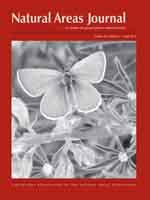Exotic forbs are spreading throughout the western United States. Although cattle (Bos taurus) and sheep (Ovis aries) have received much attention as potential exotic vectors and rangeland disturbers, native white-tailed deer (Odocoileus virginianus) are a relatively unexplored cause. Particularly in exurban areas, white-tailed deer are rapidly increasing in density. We attempted to determine if there was an association between white-tailed deer and the spread of exotic forbs. We found that patches immediately adjacent to white-tailed deer trails were more diverse, contained more bare patches, and contained more species of exotic forbs than plots located three meters away. Deer may be facilitating an expansion of exotics, deer may prefer to produce trails near exotics, or deer may simply be following the spread of humans.
How to translate text using browser tools
1 April 2012
White-Tailed Deer Trails are Associated with the Spread of Exotic Forbs
H. Lefcort,
C.L. Pettoello
ACCESS THE FULL ARTICLE

Natural Areas Journal
Vol. 32 • No. 2
April 2012
Vol. 32 • No. 2
April 2012
exotics
forbs
trails
weeds
white-tailed deer




